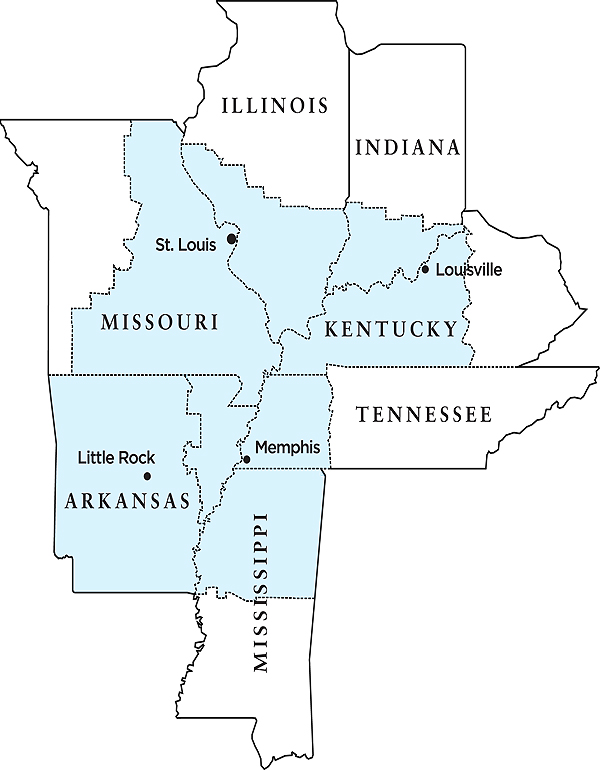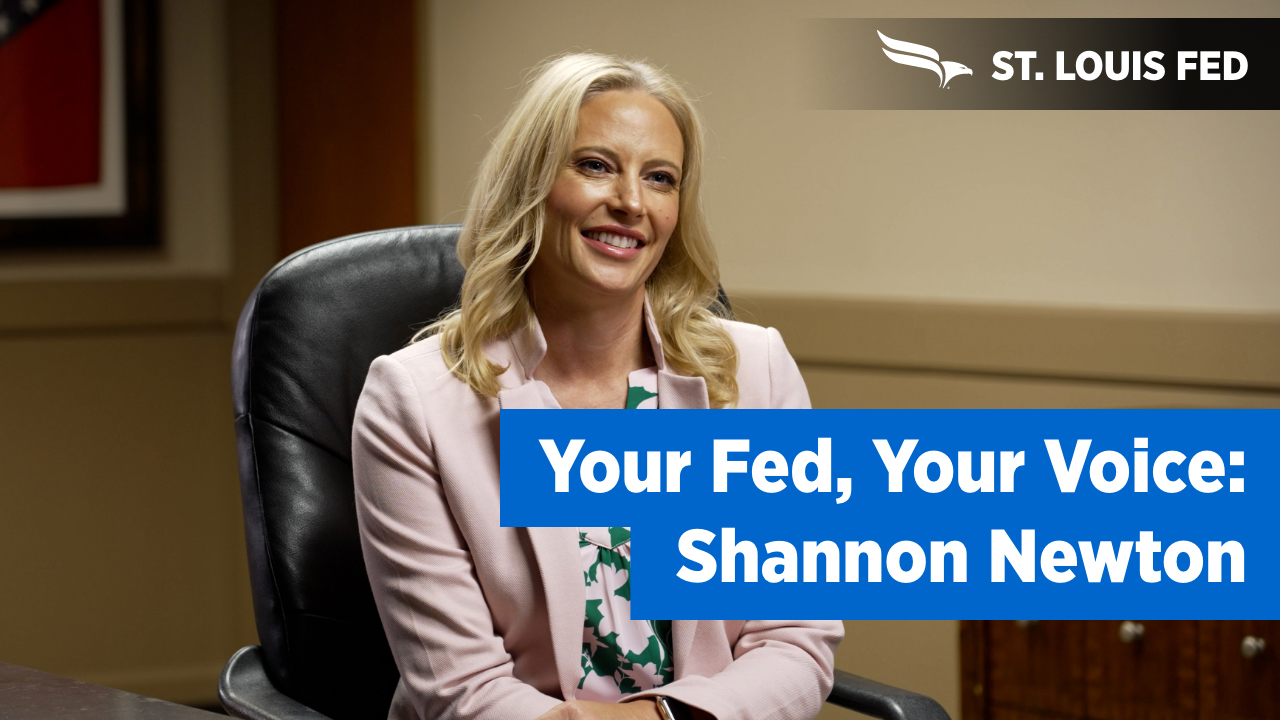Four Ways the St. Louis Fed Listens to Main Street
The Fed might seem like a faraway central bank in Washington, D.C. But the Federal Reserve System is decentralized by design: Its 12 Reserve banks and their branches are rooted in communities across America. This is so the people making decisions about monetary policy regularly hear a wide variety of perspectives about local economic realities.
Here are four key ways the St. Louis Fed listens to Main Street.
1. Branching Out in Our District

The St. Louis Fed’s Eighth District spans all of Arkansas and parts of Illinois, Indiana, Kentucky, Mississippi, Missouri and Tennessee. Covering this much ground from a single location would mean missing out on crucial conversations. To better serve the area, we have regional branch offices in:
The regional executives and other staff across the Eighth District absorb feedback from farmers, city planners, health care administrators, bankers, manufacturers, small-business owners, chambers of commerce and others—all in an effort to soak up as much information as possible about the region’s economy.
2. Hearing from Many Industries
Another way the St. Louis Fed stays dialed in to local economies is through our boards of directors and industry councils. These are made up of leaders from around the District, and members provide insights about the experiences—past, present and future—of the sectors and areas they serve. This is a vital function, since much of the data that economists consider (e.g., GDP, labor force participation, consumer prices, etc.) are backward-looking by nature.
For example, industry councils provide a forward-looking view with responses to questions about topics such as emerging trends and whether and how they expect business conditions to change.
The St. Louis Fed has four industry councils representing specific industries vital to the Eighth District:
- Agribusiness
- Health care
- Real estate
- Transportation

Shannon Newton, president of the Arkansas Trucking Association, shares her voice and important perspectives about economic conditions as part of the St. Louis Fed’s Transportation Industry Council. Industry councils include members from across the Eighth District, all of whom are regularly providing the Fed with information and insights about the economy. This video is part of our Your Fed, Your Voice series, in which advisory council members and others share their perspectives on how the Federal Reserve amplifies the voice of Main Street.
My name is Shannon Newton, and I’m the president of the Arkansas Trucking Association. I perceive my most important responsibility as a council member to prepare and share. The trucking industry is such a pivotal role in this part of the country. We play a major role in a variety of industries, not just the transportation industry, whether it be retail or manufacturing or agriculture. All of those industries are really important. And so preparing by collecting the most recent information, whether that be on labor or cost, demand, all of those issues, we’re going to have the opportunity to share what’s going on within our industry.
So prepare, and then show up and be ready to share what’s going on, because I found that the issues that we’re experiencing, the challenges that we have very easily roll over into impacting the economy as a whole. And I think those various perspectives do offer something interesting to the Fed Reserve, who are there to hear from those voices who are representing a wide variety of economic sectors. I was surprised at how open to the external input and engagement that they were. Makes you feel like the contribution and the participation is of value.
3. Focusing on Low- and Moderate-Income Communities
Many people struggle financially even when the economy is doing well.
How can the Fed help? One way is to research and talk about issues preventing people from getting steady work and moving up the economic ladder.
Our dedicated Community Development team works closely with community banks, nonprofits and philanthropic organizations to understand the economic experiences of lower-income households and communities in our region—on topics ranging from affordable housing to job availability and more.
4. Inviting Dialogue
The public has an opportunity to speak with our economists and other experts at our ongoing public discussion series, Dialogue with the Fed. These popular sessions give people a chance to hear from experts about key issues of the day and ask questions.
What It Comes Down to
The Federal Reserve System was purpose-built to keep power from becoming too concentrated in Washington or on Wall Street. Hearing from Main Street matters. But not even Main Street speaks with one voice, and that’s OK: Vigorous debate about monetary policy is a good thing. That’s why each of these areas, and many more, play a role in shaping the St. Louis Fed’s perspective about the economy.
Editor’s Note: This blog post, originally published May 23, 2018, has been updated, including with a new video reference.
This blog explains everyday economics and the Fed, while also spotlighting St. Louis Fed people and programs. Views expressed are not necessarily those of the St. Louis Fed or Federal Reserve System.
Email Us

